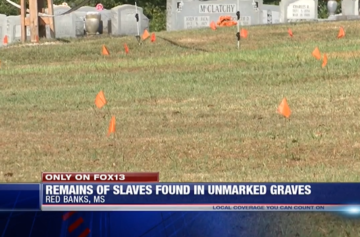In a devastating front-page story in The Atlantic titled “The Case for Reparations,” African-American writer Ta-Nehisi Coates makes one of the most powerful, logical cases for reparations owed to African-Americans that has ever been put to paper.
Over the past two weeks in the wake of his essay, certain corners of the African-American community and the liberal media have begun to engage in a probing national conversation about the penetrating force of American racism and the havoc it has inflicted on the Black community throughout American history.
But a few things make the debate feel different this time than it has in the past when the case for reparations was raised by activists such as Randall Robinson and Michigan Rep. John Conyers, who like clockwork introduces a bill every year to have Congress study the issue — and each year the bill goes nowhere. One of the most obvious reasons is that the argument this time was made on the front page of one of the nation’s most influential white magazines, The Atlantic, meaning it was hard to confine the conversation to just a subset of Black activists.
Coates appeared on MSNBC over the weekend to discuss his story on Melissa Harris-Perry’s show, ensuring that it would be opened up to an even wider audience than those who were already tapped into The Atlantic or who came upon the conversation through the communicative powers of social media.
The substance of Coates’ argument also propelled it to a place where the issue could receive more serious consideration: Rather than focusing primarily on slavery, as much of the historical talk on reparations has done, beginning with the granting of 40 acres of land to numerous communities of Blacks immediately after Emancipation, Coates focused his laser eye on the brutal and ongoing discrimination Blacks have endured in the years since slavery.
For instance, as Coates points put, the federal government “pioneered the practice of redlining, selectively granting loans and insisting that any property it insured be covered by a restrictive covenant — a clause in the deed forbidding the sale of the property to anyone other than whites. Millions of dollars flowed from tax coffers into segregated white neighborhoods.” At the same time, “legislatures, mayors, civic associations, banks, and citizens all colluded to pin black people into ghettos, where they were overcrowded, overcharged, and undereducated.”
In fact, the subhead on the Coates story says it all: “Two hundred fifty years of slavery. Ninety years of Jim Crow. Sixty years of separate but equal. Thirty-five years of racist housing policy. Until we reckon with our compounding moral debts, America will never be whole.”
Academics have calculated the value of slavery in today’s dollars at about $10 trillion in wealth. As pointed out by writer Jamelle Bouie in Slate, “If you include compound interest — to represent the compounding plunder of the next century — you are left with an implausibly large amount of money.” For perspective, consider that the federal government spent a total of $3.5 trillion last year.
In The New Republic, writer Danny Vinik wonders why Coates didn’t put a dollar figure on how much is owed to African-Americans. But then he had a revelation: “In researching the literature on reparations, I realized why Coates did not provide more details: He couldn’t,” Vinik writes. “Economists simply have not made many estimates. That’s reason enough for Congress to pass Conyers’s bill. We can debate reparations all we want. But we can’t decide whether to make reparations until we know exactly what doing so would entail.”


